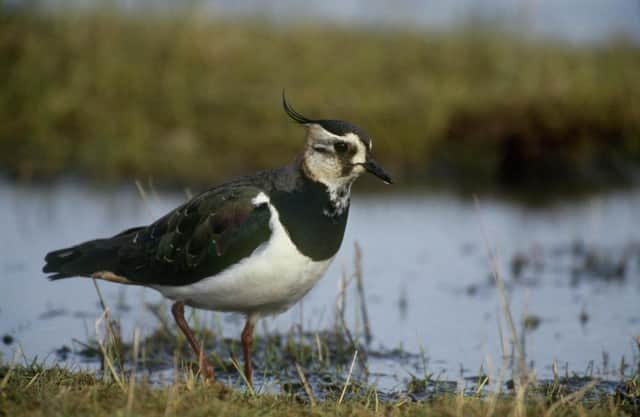How simple steps can help our bird population


It seems strange to even think it in this season of modest excess but it’s time to start planning for the “hungry gap”. In this, the sparsest of seasons, our wild birds will struggle to find ample food sources, and the Game & Wildlife Conservation Trust (GWCT) is on a mission to balance this deficit in winter food supply.
The hungry gap is the period in late winter when seeds and weeds left behind after harvesting have disappeared and when natural food sources for game and wild birds are low.
Advertisement
Hide AdAdvertisement
Hide AdThe effect is compounded by the end of the pheasant and partridge season, when many shoots stop filling feed hoppers with grain.
This lack of food during winter is known to reduce the breeding success and survival of many farmland birds.
In recent decades, skylarks and song thrushes have halved in number. The beautiful lapwing has declined by 80 per cent.
Evidence shows these declines have been driven by large-scale changes to farming. The UK is now 77 per cent farmland and using the farmland that has been designated for conservation more effectively is set to become a major issue over the next few years.
In order to meet increased demand for human food production more intensive farming techniques are being used and this has reduced essential food sources and habitats for songbirds. Feeding is also crucial for the responsible management of released game.
GWCT’s research demonstrates that feeding during the hungry gap keeps gamebirds in good body condition and increases seed-eating songbird densities.
Thus, providing supplementary food for game and wildlife has become one of the most important management tools for game and wildlife conservation.
To identify which species were in particular need of support during the hungry gap, the GWCT carried out a study into the use of feeders by different species. A major concern was to establish whether non-desirable species like crows and rats were taking lots of the grain.
Advertisement
Hide AdAdvertisement
Hide AdWe identified which species visited feeders using camera traps which were triggered by either heat or movement. The cameras were set to operate continuously, day and night, so it was possible to identify which species were using hoppers at any given time, generating thousands of images.
We also looked into how hopper location changed the attractiveness for game and other wildlife. After the analysis of more than 145,000 photographs, our researchers established the key findings which translated into practical guidelines which land managers will benefit from when siting and designing feeders.
Our research is ongoing as we need to reduce the use of feeders by pests even more, through testing different feeder designs. This will provide the maximum conservation benefit for game and wildlife.
In order for us to gain a better understanding of our current farmland bird populations, the GWCT its launching a Big Farmland Bird Count in February 2014 and all farmers, gamekeepers and land managers are urged to take part.
This important initiative offers a simple means of recording the effect of any conservation schemes currently being initiated on their land such as supplementary feeding or growing wild bird seed crops and game cover crops. It is also a useful way of gaining personal insight on how well their birds are faring.
The count will take place between the 1 and 7 February 2014, and we are inviting people to spend about 30 minutes recording the species and number of birds seen on one particular area of the farm.
A pilot scheme earlier this year took in more than 10,000 hectares across 30 farms and recorded 69 species, from tree sparrows and yellowhammer to barn owls, kestrels and buzzards.
• Katrina Candy is head of PR and education at the Game & Wildlife Conservation Trust (Scotland). For those keen to join the national Big Farmland Bird Count, the GWCT will provide a simple tick sheet that can be downloaded and taken into the field to record sightings. Participants will then be able to send the results via a dedicated web page on the GWCT’s website.
Advertisement
Hide AdAdvertisement
Hide AdFor more information on the Big Farmland Bird Count, please visit the Game & Wildlife Conservation Trust’s website: www.gwct.org.uk/bfbcto register interest or alternatively e-mail Jim Egan on [email protected] for more information.